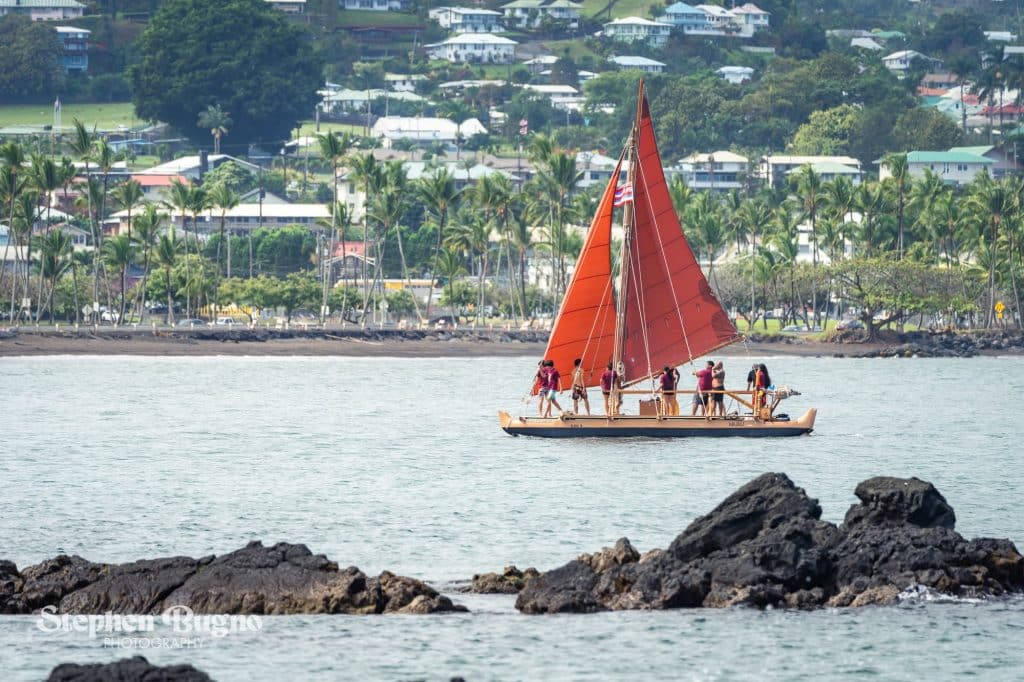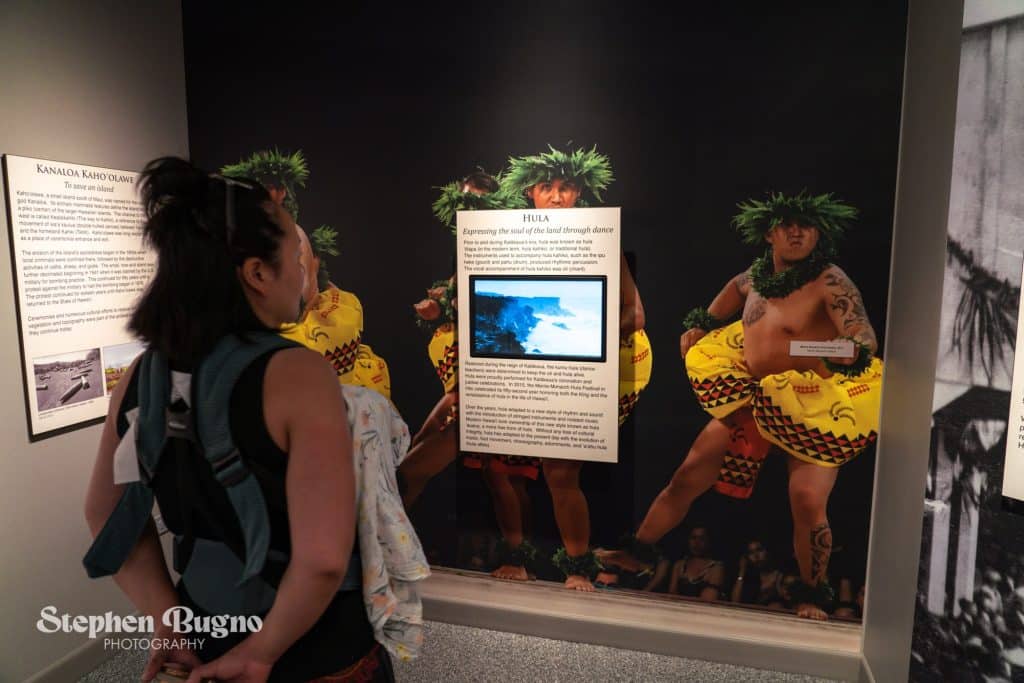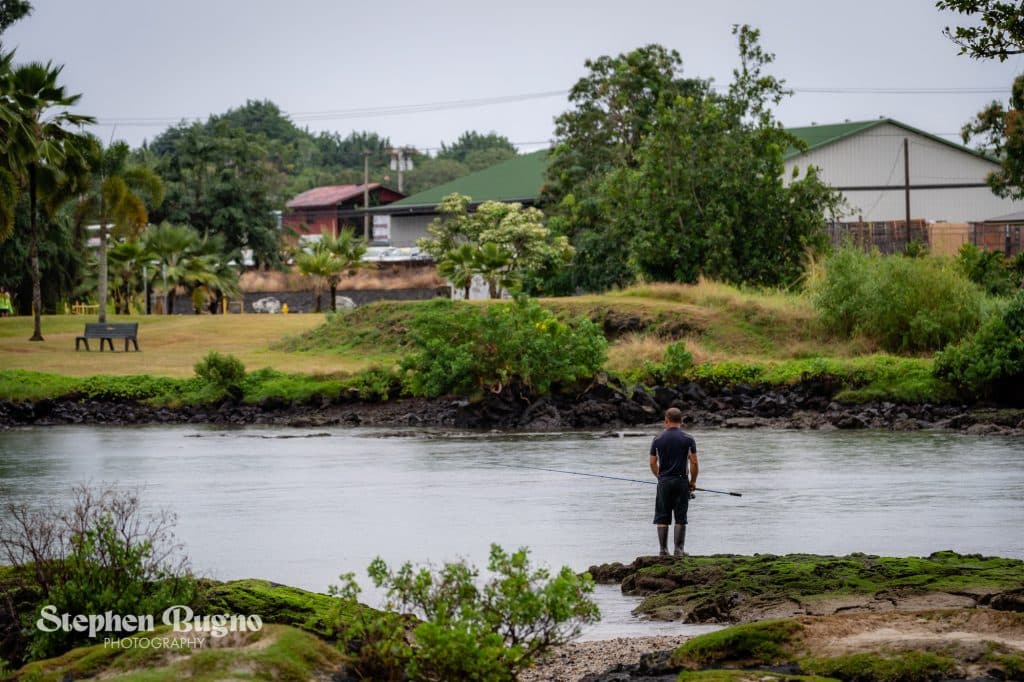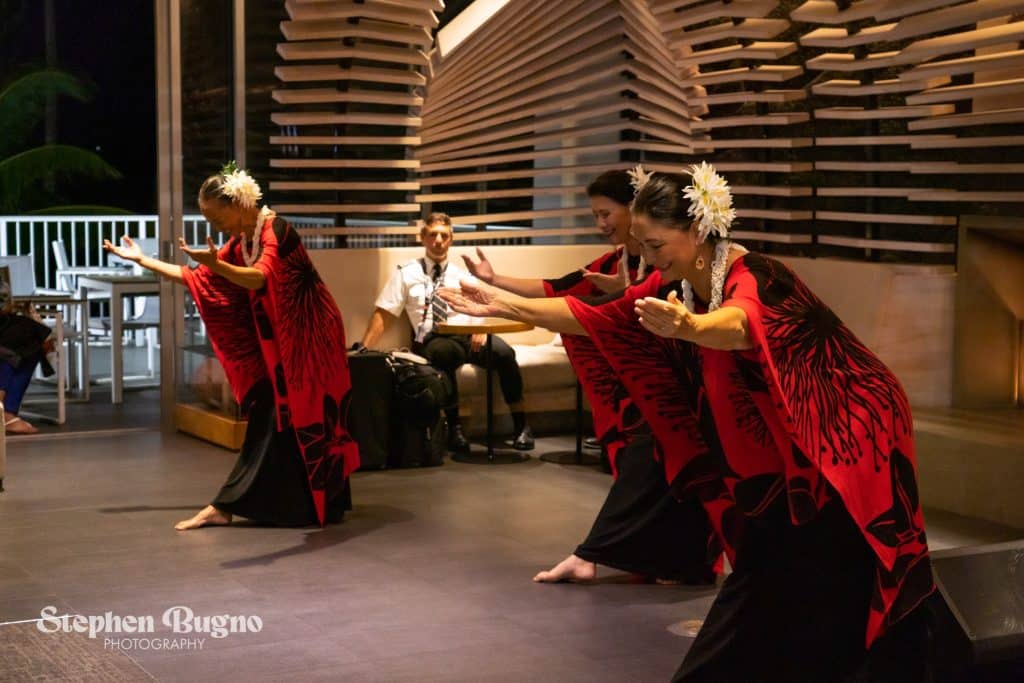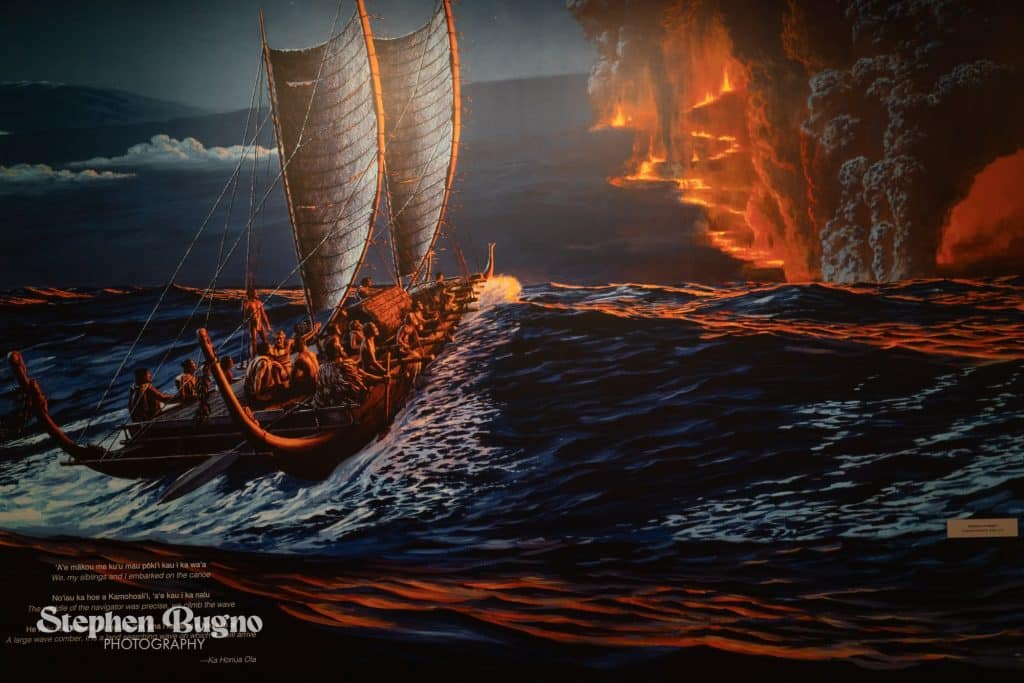Go Here to Learn about Hawaiian Culture on the Big Island of Hawai’i
Hawaiian Language and Culture have recently experienced a rebirth. Hawaiians are resurrecting their language in immersion schools and promoting the foundations of their culture. The Big Island of Hawai’i is the stronghold of Hawaiian culture and language.
Hawaiians will appreciate your interest in and respect for their culture. They first settled these islands known as the Hawaiian Islands (perhaps as far back as) 124 CE after sailing from Polynesia. Here and then, the Hawaiian culture began to take shape.
As a visitor, you’ll first want to set your sights on Hilo, the biggest town on the Big Island. This former sugar mill town has a population of about 45,000. Its melting-pot population has yielded a seriously delicious, diverse, and affordable food scene.
Stay at the Grand Naniloa Hotel. They have a team dedicated to promoting Hawaiian culture. They also host the Merrie Monarch Festival – an Annual hula festival and competition.
In Hilo, you’ll also experience a typical Hawaiian city without many tourists. Hilo has a great food scene, lots of independent shops, a few worthy museums, as well as good accessibility to Volcanoes National Park and some beautiful natural attractions like waterfalls.


Hilo is also the rainiest place in America and lacks white sandy beaches, which probably dissuades many visitors from staying here. But it is certainly worth at least a two-day stay.
For more info: Your Travel Guide to Hilo, Hawai’i
Where and How You can Experience Hawaiian Culture
Visit the Lyman Museum
Located in Hilo, the Lyman Museum presents the storied history of Hawai’ians and Hawai’i as well as its culture, immigration, colonization, illegal annexation, and statehood. You will gain a great appreciation for the unique geography and ecology, as well as the people who initially settled on these islands, which are the most remote in the world.
Talk to People
Not everyone you’ll meet here is Hawai’ian. Hawaii has a very diverse population. Hawaiian residents have come from all over the world. Immigration waves at various points over the past couple of centuries have transplanted Japanese, Filipino, Chinese, and Korean populations to the Big Island. Although there are White and Hispanic residents, people of Asian, Native Hawaiian, and Pacific Islander backgrounds make up a significant portion of the population.
I met Hawaiians and other locals fishing at Moku’ola, not far from the Grand Naniloa in Hilo. Most people are friendly and the best way to learn about life in any place is to talk to people.
I also stopped into Extreme Exposure Fine Art Gallery Hilo and met Tom Kualii, who is Hawaiian and an incredible photographer. He leads groups and photography workshops to photograph lava and other unique Hawaiian geology and ecology. His photos of lava were out-of-this-world insane. Our conversation shed some light on being Hawaiian in Hawaii in the 21st century.
Many Hawaiians are proud of their heritage and happy to share their knowledge and experiences with visitors.
Visit The Grand Naniloa Hilton Doubletree
If you’re not staying at the Grand Nailoa, you can stop by to visit. Get a beverage at the lobby bar and enjoy the nightly Hula performance and live music. Rarely do you see international hotel chains engage with local communities, but Grand Naniloa is doing just that.
They support and encourage the preservation and growth of the Hawaiian language and culture. They also put a lot of effort into sharing Hawaiian language and culture with guests, be it through photography and exhibits throughout the hotel or little note cards explaining certain aspects of Hawaiian life. And the open-air lobby is a fun and relaxing place to hang out day or night.
Eat Hawaiian Food
Eating local food is always an easy way to both enjoy and connect with local residents. There are excellent options for eating Hawaiian around Hilo and the big island.
Get the loco moco or saimin at Hawaiian Style Cafe, the famous 1lb laulau or tasty plate lunches at Kuhio Grille or a tall stack of macadamia-nut pancakes at Ken’s House of Pancakes. To get the taste of old Hawai’i, try traditional aged poi. It has a sour fermented taste.
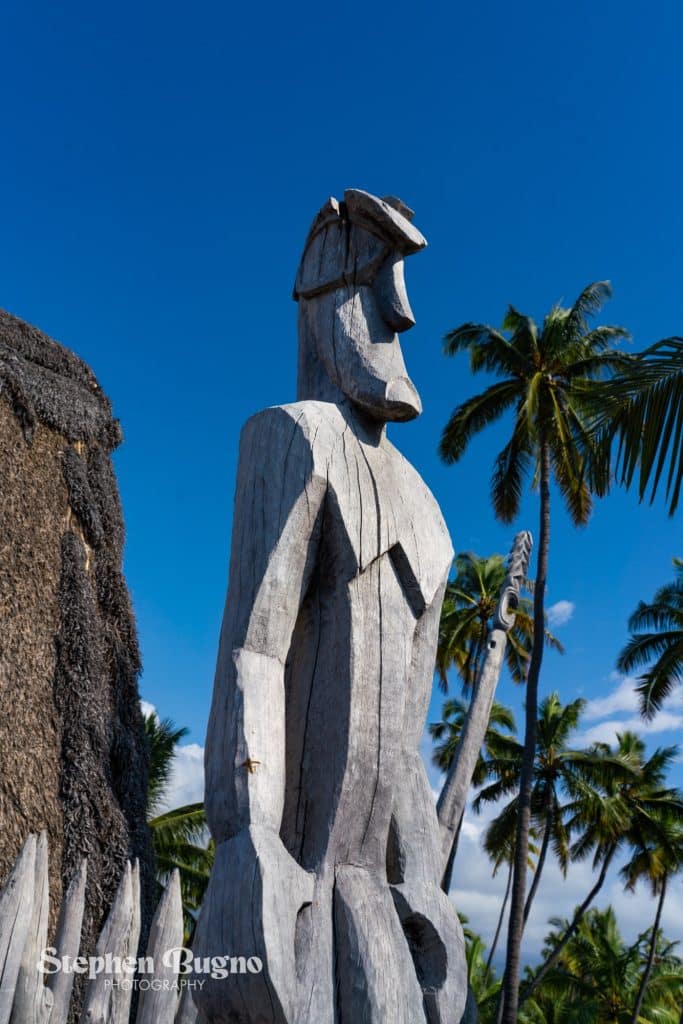
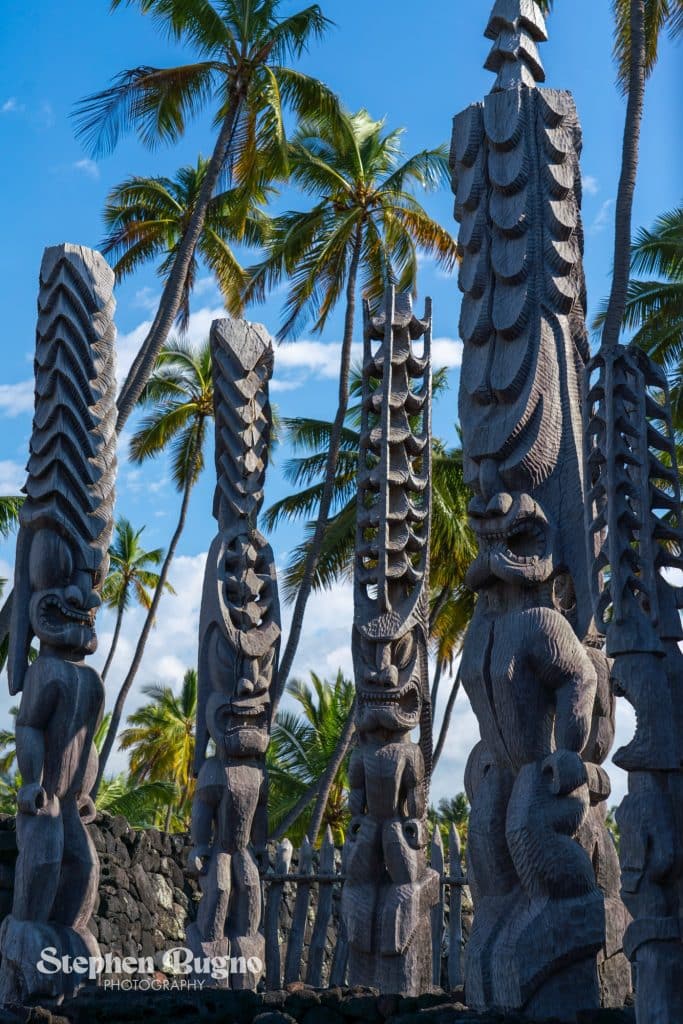
Visit Pu’uhonua O Honaunau National Historical Park
On the leeward (west) side of Hawai’i is the Pu’uhonua O Honaunau National Historical Park. “Park” is a misnomer. This is a sacred sight for Hawaiians. It is one of the best-preserved pu’uhonua in Hawaii. Visit with respect.
The site, run by the National Park Service, provides insights into ancient Hawaiian traditions, customs, and ways of life. Here you can learn about the kapu (taboos) system, which governed various aspects of Hawaiian society, and the role of Pu’uhonua (places of refuge) in Hawaiian culture.
The ranger-led interpretive program is an excellent introduction to the history, culture, and religion of the Hawaiians. You might even leave feeling a little shocked and unwelcome after the program, but it just goes to show you how seriously they expect your reverence here.
Visit the ‘Imiloa Astronomy Center
Primarily focused on astronomy and science, the Imiloa Astronomy Center also offers exhibits and programs that explore the connections between Hawaiian culture, navigation, and the stars.
A visit here is a unique opportunity to learn about the ancient Hawaiian art of wayfinding (celestial navigation), which is deeply essential to the cultural foundation of Hawaiians.
Located in Hilo, the ʻImiloa Center offers educational and cultural programs for visitors, students, and local residents through exhibits, activities, and a full-dome planetarium.
Learn and Use Hawaiian words Respectfully
Make an effort to learn and correctly pronounce certain important Hawaiian words. You already know “Aloha” which is perhaps the most famous Hawaiian word. It can mean “hello” or “goodbye” and is a versatile greeting and expression of warmth and welcome. Equally important is “Mahalo”, or “Thank you.” Use this word to express gratitude and appreciation.
Another important word you’ll come across is “’Ohana,” meaning “Family,” which emphasizes the importance of family bonds in Hawaiian culture. “Pono” which means “righteous” or “balanced” signifies doing what is right and living in harmony.
Take the Pono Pledge
When you take the Pono Pledge, you learn about the values that Hawaiians hold dear to protect their land and culture. Being Pono means living and conducting yourself with “goodness, uprightness, morality, correct or proper procedure, excellence, righteousness, etc”.
Being Pono means respecting private property, caring for the land and sea, admiring wildlife from a distance, leaving lava rocks and sand where you found them, and respecting the power of the Pacific Ocean, among other things.
Being Pono is a great way to gain the respect of your hosts and be welcomed back to this beautiful place.
Here’s where you can take the Pono Pledge: https://ponopledge.com/
